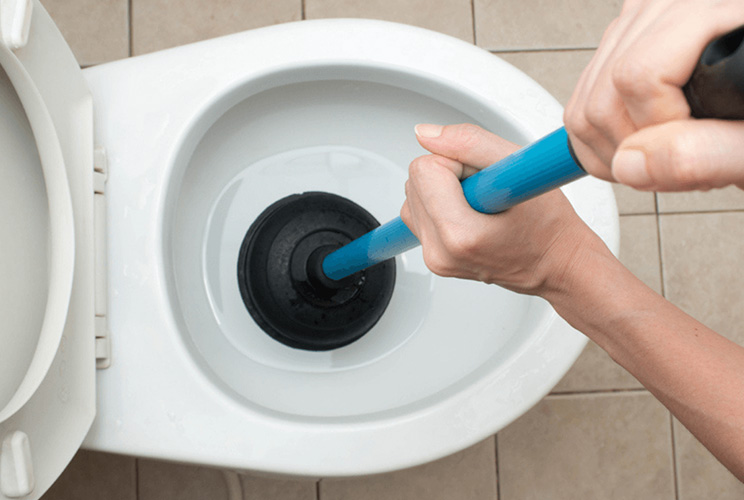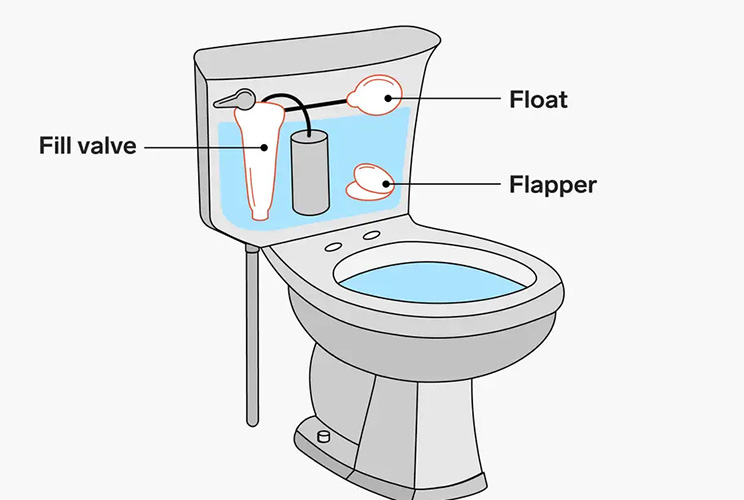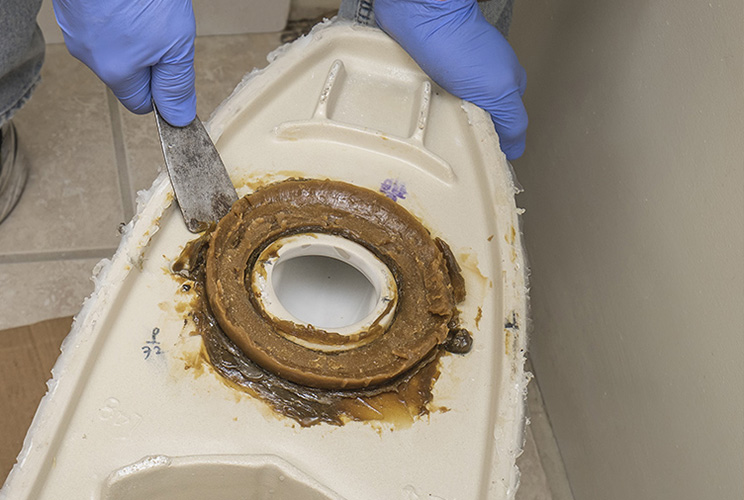Discover the reasons behind the unpleasant odours in your toilet and learn effective solutions to…

Why Does My Toilet Not Flush Properly? Common Causes and Practical Solutions for Australians
Discover the reasons behind a poorly flushing toilet and learn practical solutions to restore its functionality.
A properly functioning toilet is an essential part of any Australian household. However, encountering issues with your toilet not flushing properly can be frustrating and inconvenient. If you’ve ever found yourself asking, “Why does my toilet not flush properly?” you’re not alone. In this comprehensive guide, specifically tailored for Australians, we will explore the common causes behind a poorly flushing toilet and provide practical solutions to help you resolve the issue. Let’s dive in and get to the bottom of this!
Cause #1: Insufficient Water Level in the Tank
One of the primary reasons for a toilet not flushing properly is an inadequate water level in the tank. Here’s what you can do to address this issue:
Check the Water Level
Lift the toilet tank lid and examine the water level. It should be approximately one inch below the top of the overflow tube.
Adjust the Water Level
- If the water level is too low, locate the fill valve and adjust it to increase the water level. Refer to the manufacturer’s instructions for the specific adjustment procedure.
- Alternatively, if the fill valve is faulty or unable to maintain an adequate water level, consider replacing it with a new one.

Cause #2: Clogged or Partially Blocked Toilet Bowl
A clogged or partially blocked toilet bowl can lead to ineffective flushing. Here are a few solutions to tackle this problem:
Use a Plunger
- Place a plunger over the drain hole in the toilet bowl, ensuring a tight seal.
- Push and pull the plunger vigorously to create suction and dislodge the clog.
- Repeat the process if necessary until the water starts to drain properly.
Try a Toilet Auger
- If the plunger doesn’t work, a toilet auger can be an effective tool for breaking up stubborn clogs.
- Insert the auger into the drain hole and rotate it to break up or remove the blockage.
- Be cautious not to damage the porcelain while using the auger.
Seek Professional Help
- If you’re unable to clear the clog or suspect a more severe blockage, it’s advisable to seek the assistance of a professional plumber.
- They have the expertise and specialised tools to address complex clogs and ensure your toilet is functioning optimally.

Cause #3: Malfunctioning Flapper Valve
The flapper valve is a crucial component that controls the water flow from the tank to the bowl during a flush. If it’s not functioning properly, your toilet may not flush as intended. Here’s how you can tackle this issue:
Inspect the Flapper Valve
- Lift the toilet tank lid and visually inspect the flapper valve located at the bottom of the tank.
- Look for any signs of damage, wear, or misalignment.
Clean or Replace the Flapper Valve
- If the flapper valve appears dirty or worn, you can try cleaning it with a soft cloth.
- If cleaning doesn’t resolve the issue, it’s best to replace the flapper valve with a new one following the manufacturer’s instructions.
- Ensure the new flapper valve is properly seated and forms a tight seal when closed.

Cause #4: Mineral Build-up in the Rim Jets
Over time, mineral deposits can accumulate in the rim jets, affecting the flushing performance of your toilet. Consider the following steps to address this issue:
Clean the Rim Jets
- Use a toilet brush and a mixture of vinegar and water to clean the rim jets.
- Scrub around the openings to remove any mineral build-up that might be hindering the water flow.
Soak the Rim Jets
- If the mineral build-up is severe, you can remove the rim jets and soak them in a vinegar solution overnight to dissolve the deposits.
- Rinse the rim jets thoroughly and reattach them before testing the flush.
- Make sure the rest of your toilet bowl is clean as well.
An aussie mum recently discovered Scalex to be really efficient in cleaning the bottom of the toilet bowl, and 7 News covered the discovery.

Cause #5: Low Water Pressure
Insufficient water pressure can impede a proper flush. If you suspect low water pressure is the cause, consider the following steps:
Check the Water Pressure
- Test the water pressure in other faucets or fixtures throughout your home.
- If the water pressure is consistently low, contact your water supplier to address the issue.
Consider a Pressure-Assisted Toilet
- If low water pressure is a recurring problem, you might want to consider upgrading to a pressure-assisted toilet.
- These toilets use compressed air to aid in flushing, ensuring a more reliable performance.
What is a pressure assisted toilet you may be asking yourself. Here’s an explanation by Nachi.org

When to Call a Professional Plumber
While many issues with a poorly flushing toilet can be resolved with DIY solutions, there are instances where it’s best to call a professional plumber. Here are some situations when expert assistance is recommended:
Persistent Problem
If you’ve tried various solutions and your toilet still doesn’t flush properly, it’s time to seek the help of a professional plumber. They have the knowledge and experience to diagnose the underlying issue accurately and provide the appropriate solution.

Complex Plumbing Repairs
Certain problems with toilet flushing may require complex plumbing repairs that are beyond the scope of a typical homeowner. Issues with sewer lines, water pressure, or internal components of the toilet may necessitate professional expertise and specialised tools.
Water Leaks or Damage
If you notice water leaks, damage to the toilet, or water pooling around the base, it’s crucial to call a plumber immediately. Water leaks can cause further damage to your bathroom and plumbing system if left unaddressed. A professional plumber can identify the source of the problem and make the necessary repairs. Did you know the Victorian Government has a Community Rebate Program to help you save on your water bill, which includes water leaks?
The Community Rebate Program offers rebates to customers in vulnerable and hardship situations to help reduce their water consumption and water bills. This is done by improving the water efficiency of fittings, fixtures and appliances and fixing leaks around the property. The program is run by each water corporation who sends a qualified plumber to undertake a water audit and retrofit. – Water.vic.gov.au
Older Plumbing Systems
If your home has an older plumbing system, it’s advisable to consult a professional plumber for any toilet-related issues. They can assess the overall condition of the plumbing system and provide recommendations for repairs or upgrades to ensure optimal functionality. Not to mention It’s probably not going to meet today’s Plumbing codes and standards.

Safety Concerns
If you’re unfamiliar with plumbing systems or lack the necessary skills and tools, attempting complex repairs can be risky. Safety should always be a priority, and calling a professional plumber ensures that the job is done safely and efficiently, minimising the risk of accidents or further damage.

How to tackle this issue
A toilet that doesn’t flush properly can be a frustrating and inconvenient issue in any Australian home. By understanding the common causes behind a poorly flushing toilet and implementing the practical solutions provided in this guide, you can often restore its functionality. However, if the problem persists, becomes complex, or you’re unsure about performing any repairs, it’s always recommended to call a professional plumber.
Professional plumbers have the expertise, experience, and specialised tools to diagnose and resolve toilet flushing issues effectively. Don’t let a poorly flushing toilet disrupt your daily life. Take action and ensure a smoothly functioning toilet by consulting a professional plumber when needed. Enjoy the convenience and comfort of a properly functioning toilet in your Australian home!




This Post Has 0 Comments